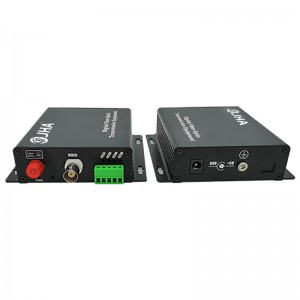We believe that many users have a certain understanding of optical transceivers. Many users do not know much about optical modules. Optical modules are an important part of optical transceivers. Optical modules are very important to optical transceivers, so what is an optical module and why can it play such a big role in optical transceivers?
The optical module of the optical transceiver is generally used in the backbone network of the optical fiber network. Optical modules are mainly divided into GBIC, SFP, SFP+, XFP, SFF, CFP, etc., and optical interface types include SC and LC. However, SFP, SFP+, XFP are commonly used nowadays instead of GBIC. The reason is that GBIC is bulky and easily broken. However, the commonly used SFP is small and cheap. According to the type, it can be divided into single-mode optical modules and multi-mode optical modules. Single-mode optical modules are suitable for long-distance transmission; multi-mode optical modules are suitable for short-distance transmission.
Optical devices are developing towards miniaturization, improving (electrical/optical, optical/electrical conversion) efficiency, and improving reliability; planar optical waveguide (PLC) technology will further reduce the volume of bidirectional/three-directional optical components and improve component reliability. The functions and performance of integrated circuit chips have been strengthened, so that the volume of optical modules has been reduced and the performance has been continuously improved. The system continuously puts forward new requirements for the additional functions of the module, and the intelligent function of the optical module must be continuously improved to meet the needs of the system.
In fact, in the optical transceiver, the importance of the optical module far exceeds the core chip. The optical module is composed of optoelectronic devices, functional circuits and optical interfaces. Simply put, the role of the optical module is photoelectric conversion. The transmitting end converts electrical signals into optical signals. After transmission through the optical fiber, the receiving end converts the optical signals into electrical signals, which is more efficient and safer than transceivers. After the power is turned on, the optical module is in the process of constantly emitting light, and there will be attenuation over time. Therefore, it is very important to detect the work of the optical module.
We need to use an optical power meter to detect the quality of an optical module. Generally, when the optical module leaves the factory, the original manufacturer will submit the quality inspection report of this batch to the processing manufacturer. The manufacturer uses the optical power meter for actual evaluation. , When the difference is within the reporting range, it is a qualified product.
For the value tested with the optical module, the factory power range is -3~8dBm. Through the numerical comparison, the optical module can be determined as a qualified product. It is particularly reminded that the smaller the power value, the weaker the optical communication capability; that is, the low-power optical module cannot perform long-distance transmission. According to relevant sources in the industry, some small workshops will buy second-hand optical modules, whose numbers are refurbished and used in short-distance optical transmission equipment. Obviously, this is extremely irresponsible to users.
Post time: Jul-26-2021






